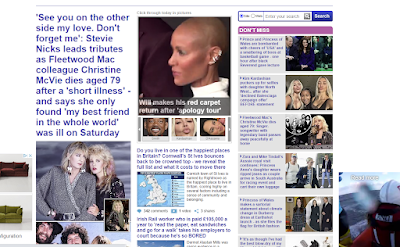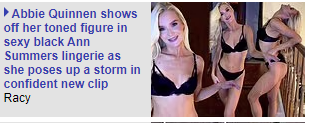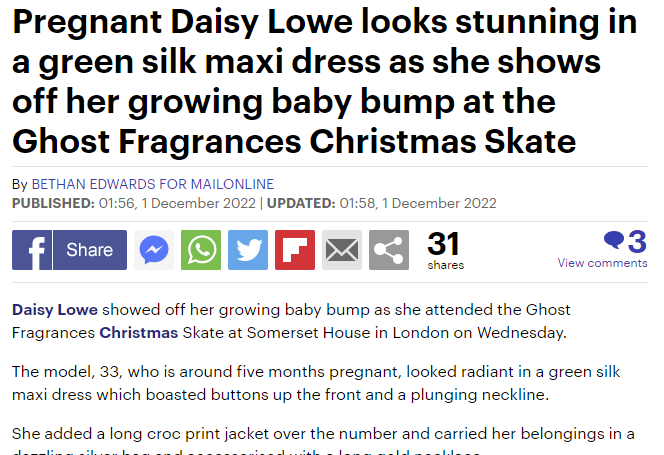Introduction: the sticky relationship between UK newspapers and UK political parties
As you leaned in the last session (and if you didn't do the last lesson, click here to do it now!), UK newspapers are EXTREMELY biased. This is for a number of reasons:
1 - Demonstrating a clear and biased political ideology allows the newspaper to target audience members who share the same ideology
So The Guardian is broadly a centrist newspaper. Not too left, not too right. Audience members who have a similar political ideology will feel right at home with this kind of newspaper. And a clear audience allows the newspaper to minimise risk and maximise profit!
2 - Demonstrating a clear and biased political ideology allows the newspaper to manipulate the ideology of the target audience
This one is a bit trickier. As we saw with George Gerbner's cultivation theory,. audience members are not just sheep. But, if they see the same thing over and over and over again, the audience may agree with this ideology! So, if the newspaper tells the audience over and over again that there is mass immigration in this country, and we are running out of space, then they are more likely to believe this, and therefore buy the newspaper that tells them this
3 - Demonstrating a clear and biased political ideology allows the newspaper to manipulate who the audience will vote for
This is closely related to the last point, and it works along the same principal. If a 'Labour Voter' feels at home reading the Daily Mirror, then they are more likely to buy it. And if a Conservative voter feels more at home with the Daily Mail, then they are more likely to buy this one.
Additionally, if a newspaper sides with a particular political party, then the newspaper themselves gets certain benefits and privileges. For example, access to exclusive interviews, articles, editorial byline and 'off the record' gossip.
This might seem like a wild conspiracy theory, but the relationship between the UK media industry and politicians is well documented. An excellent example is former UK prime minister Boris Johnson, who started his career writing for The Times, The Telegraph and The Spectator, where he wrote often politically incorrect articles about ethnic minorities. He then became a conservative MP, arguably utilising the same ideological perspectives he previously 'sowed' (see Gerbner) to garner public support.
Constructing reality
Nothing in a media product is 'real'. It is a representation. This means a 're-presentation' of pre-existing concepts by the producer. So, if for example you see 'an old white man' in a music video, this person doesn't exist. However, the producer has chosen (casted) an actor, and has used shot types, camera angles, editing, colour grading, soundtrack and so on to 're-present' this old white man, according to their own ideology.
Basically, this makes whoever makes media products extremely powerful, because the producer gets to argue what is 'really real'.
Task 1 - How is Boris Johnson represented in both the front page of the Daily Mirror and the front page of The Times set editions?
Access the front pages by clicking on this link and then pasting them in to your blog post.
Now answer these questions, first for the Mirror, then for the Times. Yes, this is a little repetitive! That's the point!:
- Who is Boris Johnson? What groups does he represent? I'll get you started: he is white, he is middle aged...
- How is the representation of Boris Johnson constructed through media language? You can and should run through the following points for both newspapers:
- Point of view and ideology
- Codes and conventions of news products/newspapers/type of newspaper
- Layout and design
- Composition – positioning of headlines, images, columns, combination of stories
- Images/photographs - camera shot type, angle, focus
- Font size, type of font (e.g. serif/sans serif)
- Mise-en-scène – colour, lighting, location, costume/dress, hair/make-up
- Graphics, logos
- Language – headline, sub-headings, captions
- Copy
- Anchorage of images and text
- Elements of narrative
- What elements of political bias are evident in both front pages? Remember, The Mirror generally favours a left wing/labour audience, but The Times generally favours a right wing, conservative audience... So what is going on here?
Exploring the representation of women in The Mail Online's 'sidebar of shame'
 |
| The 'sidebar of shame' is officially called the 'Don't Miss' bar, and can be found by scrolling down a bit on the main page and looking to the right. |
Task 2 - Analyse the representation of women in The Mail Online 'don't miss' bar
Go to The Daily Mail website which can be found by Google searching for 'daily mail' (or save time by using the images below!)
Find the 'don't miss' bar (scroll down, two the right)
Find three stories on this bar featuring sexualised representations of women. This may sound like a subjective task, but you may quickly realise it's rather straightforward. Scroll down a bit to find stories and representations that you may find striking.
Click on the story, and make screencaps.
- What language is used to represent women?
- What images are selected to represent women?
- What anchorage is constructed through the se of captions?
- Why are these images included?
- How do these images appeal to a heterosexual female target audience?
- What information is included about these women?
- Where have the images been sourced from?
- In what ways do these stories utilise stereotypes?
- What messages about women are constructed through the combination of images and copy (text)?
- What values and ideologies are reinforced through the representation of women in these stories?
- And (this is the most important question) why is the producer expressing these ideological perspectives?
Note: since a few students have mentioned that they are uncomfortable with accessing the Mail Online, and to save time for students who just wish to jump in to the analysis, I have included a range of highly selective and leading images found on The Mail Online on 01/12/22. You can use these to complete the questions above



















